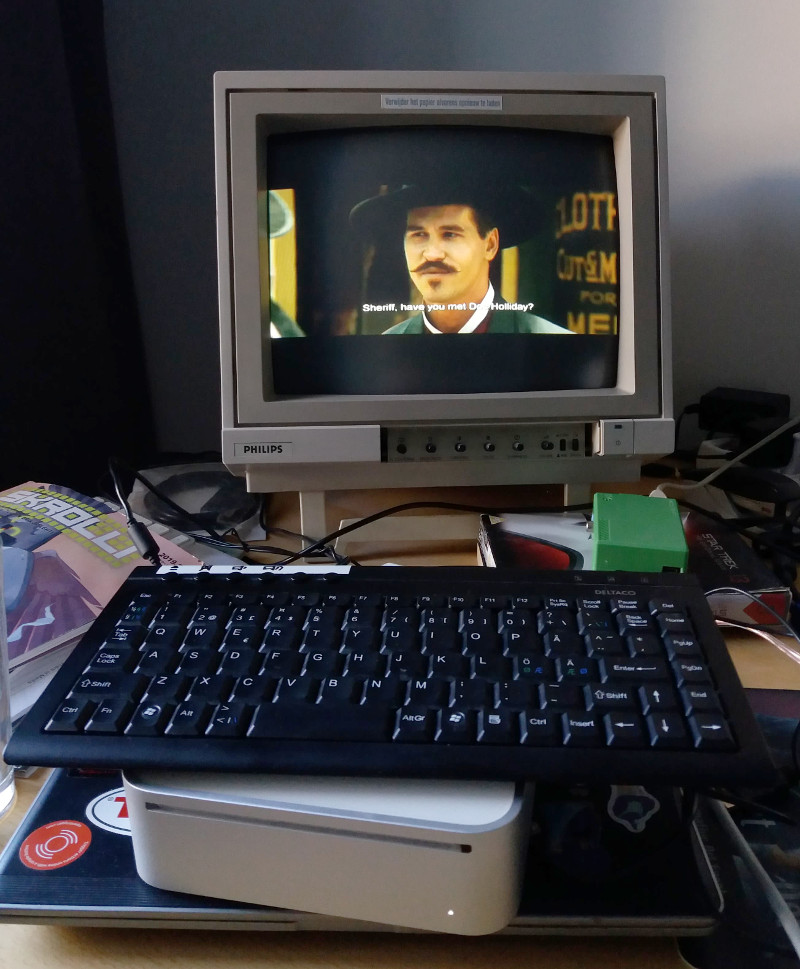Reviving an Old Mac Mini + Composite Video
February 4th, 2020
I had an old Core 2 Duo based Mac Mini lying around with next to no use: too slow for desktop or video player use, too hot and noisy as a home server. OS X support had ended years ago, so pretty much the only sensible option for the operating system was some flavor of Linux – a supported version of Windows would most likely mean sticking to 32 bits and 3 GB of memory (one gig is lost because of the chipset) isn’t too much either.
It wasn’t too smooth sailing with Linux either, though. My Mini is somewhat of an oddity with a 32-bit EFI firmware but a 64-bit capable CPU. Unfortunately the combination means that normal 64-bit distros won’t boot and install. There are EFI hacks, such as rEFIt, which might let you work around the issue, but fortunately there was no need for that, as Matt Gadient has made available several modern 64-bit distros for 32-bit EFIs right here. For some reason Lubuntu didn’t boot properly after the installation was complete, so I settled for a comparable Debian+LXDE combination.
Getting Debian to run was not a biggie, apart from figuring out how to change the desktop environment to LXDE. What I had in my hands was still an underpowered, somewhat boring box with no particular use. However, I also own a DVI-composite/s-video adapter, which held promise of plugging the machine into the (t)rusty old Philips for some CRT goodness. Debian did boot with the dongle and displayed a little corner of a larger screen in black and white. I was already about to give up, but with these instructions the situation improved greatly. Do note that the output might be called TV1 instead of TV. Some more tweaking with xrandr landed me PAL colors and proper borders. The xorg.conf setting for the TV standard didn’t seem to work but this did:
xrandr --output TV1 --set "mode" PAL
Border names have changed to “left margin” etc. as well (see xrandr –verbose for all the parameters). With little testing videos seem to play without tearing using VLC as long as the controls aren’t onscreen. Mplayer seemed to be more robust, but curiously it worked better if you switched to fullscreen using the f key instead of the -fs command line parameter – even 50 fps scrolling was silk smooth. My other test case was SCUMMVM, which seemed to tear a bit, but otherwise worked beautifully. A C2D is enough for MT-32 emulation too, unlike Raspberry Pi 1. Oh well, I might not actually use the Mini much for anything even with all this, but at least it was nice to see that PAL is perfectly possible on Linux using the Apple dongle.

Kommentin kirjoitus
You must be logged in to post a comment.
RSS feed for comments on this post.